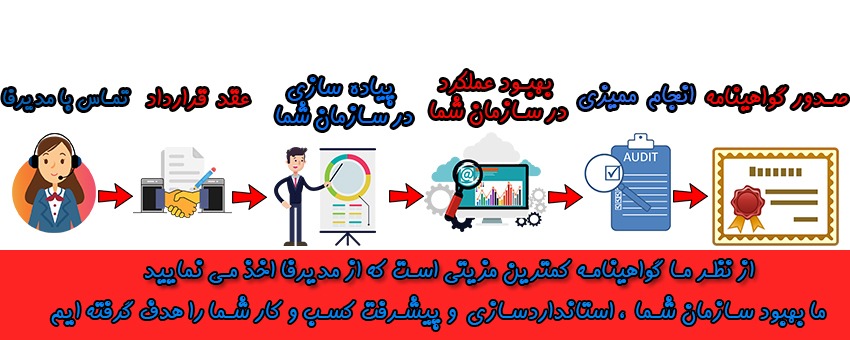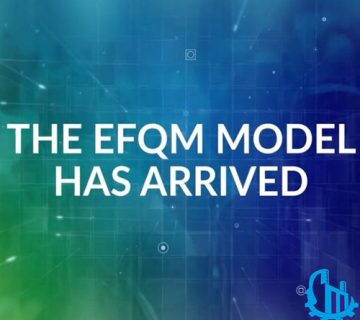
Contact our experts at Modirfa to get free advice on organizational agility and business analysis.
02188764867 – 02188761795

Agility landscape
What is the competitive advantage of agile organizations? In every organization depending on its type and size and the environment in which the organization's business is going on, there are always ups and downs that adaptation and flexibility can be the best answer to these ups and downs. Such a capability for the organization is called agility.
Being agile doesn't just mean whatever happens! Being agile is a flexible way of thinking against changes in the business environment so that the organization maintains its survival in all circumstances, puts value creation at the forefront of its work, and experiences continuous improvement in all circumstances.
Agility from the perspective of the BABOK business analysis standard
The agile perspective highlights the unique characteristics of business analysis when efforts and actions are taken in the context of agile environments in organizations.
Agility is having a flexible mindset that is embodied in a set of values and principles and works through a variety of complementary methods. Agile initiatives involve continuous change. Business analysts working on agile initiatives constantly reevaluate, adapt, and adjust their efforts and tactics. Responsible for last-minute analysis and delivery of products, business analysts work to continuously provide flexibility for change. It is important to communicate these decisions so that they can be used effectively by the agile team.
Business agility analytics ensures that information at the right level of detail is available to the agile team at the right time. Business analysts help agile teams answer these questions:
What need are we trying to fulfill?
Is this need worth satisfying?
Do we have to deliver something to meet this need?
What is the right thing to do to meet this need?
Business analysis work is performed continuously throughout an agile initiative and relies heavily on interpersonal skills such as communication, facilitation, coaching, and negotiation. Business analysts are active members of an agile team and often facilitate the planning, analysis, testing, and implementation of activities. In an agile team, business analysis may be performed by a product manager/owner, business analyst, or other defined team roles. Business analysts help the team identify revisions to assumptions and other project changes that arise.
Characteristics of agile organizations
Integration of processes
One of the most striking differences between traditional and agile organizations is having complete integration in all processes. In fact, in such organizations, all processes together explain a comprehensive effectiveness. The emphasis of agile organizations is always on continuous movement and improvement.
Due to the existence of such a feature in the organization, strategies and perhaps goals can change daily or weekly. Agile organizations think beyond adapting to change. Perhaps the best description for the characteristics of agile organizations is fishing out of muddy water, as these organizations tend to take advantage of potential opportunities in turbulent market environments.
Focusing on meeting needs, expectations and value creation
Another prominent feature that can be seen in such organizations is that agile organizations don't just think about selling products and are engaged in satisfying customer needs in a different way. These organizations use all their efforts to meet the needs and expectations of customers, and they believe that if this happens, sales will increase as well.
The word "quality" has no peak is the main work of such organizations, because they know that the product will always decline one day in its life curve, and to prevent such an event, they always seek to enrich their product by creating value for customers. . In this way, the agile organization is placed in a distant place from its other competitors, and it is not easy to overtake such organizations in the market.
Simple yet effective
On the other hand, agility deserves emphasis on simplicity, stepping on the path of agility and using its techniques requires expertise in diverse and attractive situations such as: Management of people, management of processes, management of innovation in the organization, etc., because with the beginning of the 21st century, achieving positions and survival of the organization in competitive markets, both domestic and foreign, has become much more difficult. This is due to the emergence of the modern business era, which we are all aware of the immediate changes in such an environment.
Adaptability and flexibility
An environment where every change in a corner of the world causes the numbers to rise and fall in an astronomical manner, and the obvious example is the spread of the Corona virus, economic sanctions, instability of prices, exchange rates, etc., so every organization in such a situation has two ways. or reaches the end of its lifespan and gradually declines or makes adaptation its main strategy.
In such a strategy, the ability to adapt to changes in the business environment is considered at the top of all decisions. Agile organizations are very flexible in responding to market changes. If we put simplicity, innovation and satisfaction of customers' needs and flexibility and adaptability as the strategy of our organization, it is definitely more valuable for the organization to use the intellectual force of the personnel than their physical force.
Agile infrastructures
In any organization, information is an important platform for identifying the needs and expectations of customers, creating value for them and producing or providing products and services that meet their needs. Therefore, it shows the importance of integrated information in agile organizations. In agile organizations, the flow of information is uniform and continuous, because in turbulent market environments, information about changes must be received, reviewed, prioritized and finally analyzed in order to effectively make management decisions.
Certainly, receiving such information and making it flow in the organization to create the final product or service in a way that has added value requires an effective and efficient business architecture, in the next place, information flows in a favorable information technology platform. so that the information reaches the business analysts correctly and on time.
In the next step, there is information analysis that can intelligently analyze the business information of the organization and provide it to the management for decision-making, so this decision-making requires a business intelligence system. Each of the above-mentioned steps work correctly in such a way that the correct sequence of processes is arranged efficiently and effectively, and if this is not the case, the losses in the processes can significantly reduce the agility of the organization.
The benefits of agility
In general, agile organizations are able to:
Respond to market changes, needs and expectations of customers in the shortest possible time
By using a wide range of abilities, they will be at a level of productivity that will see their goals and objectives in the best possible time.
They grow in information processing with the same basic facilities as if changes in the market environment have no effect on the excellence of the organization and they always maintain their continuous improvement.
Tasks and operations are performed at the appointed time, but less often, and in the meantime, value creation for customers is seen more than ever in the processes.
Organization agility consulting and business analysis
The projects defined by the Light Engineering Consultants team are carried out in order to implement the agile approach in the organization based on the Business Analysis Standard (BABOK). In general, two situations are defined for the organization at the beginning of each project:
1- The current state of the organization
2- The target status defined for the organization at the beginning of the project
Due to the fact that agility in the organization should flow in the form of culture in the organization and be followed up continuously, projects are defined for the organization in one-year intervals. In each project, according to the definition of the current state of the organization and the target state, and taking into account the collected documents, several meetings are planned for analyzing the business of the organization and training for the owners of the processes and managers.
Noor Consulting Engineers Group (Modirfa) is proud to announce that since 1987, it has implemented various and successful projects at the highest levels of the industry and is ready to provide services. Standard advice , training, and business analysis for you, dear managers, to help your respected organization to achieve excellence.
contact us
02188764867 – 02188761795
If you have analyzed your business so far, our first suggestion is business analysis based on the BABOK standard. Because it analyzes the organization from 5 perspectives of agility, organization architecture, business process management, business intelligence and information technology and identifies the organization's strengths and weaknesses.
Be sure that if an organization gives you an ISO certificate without implementing it in your organization and conducting an audit, it must be a fraud.






No views